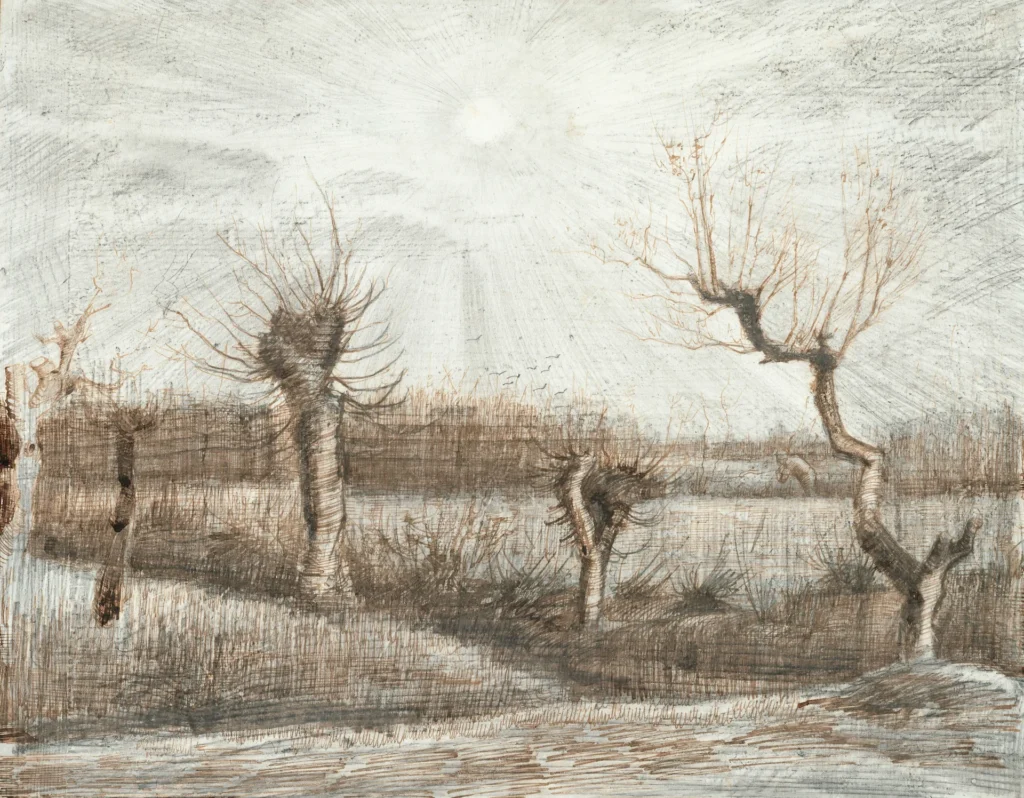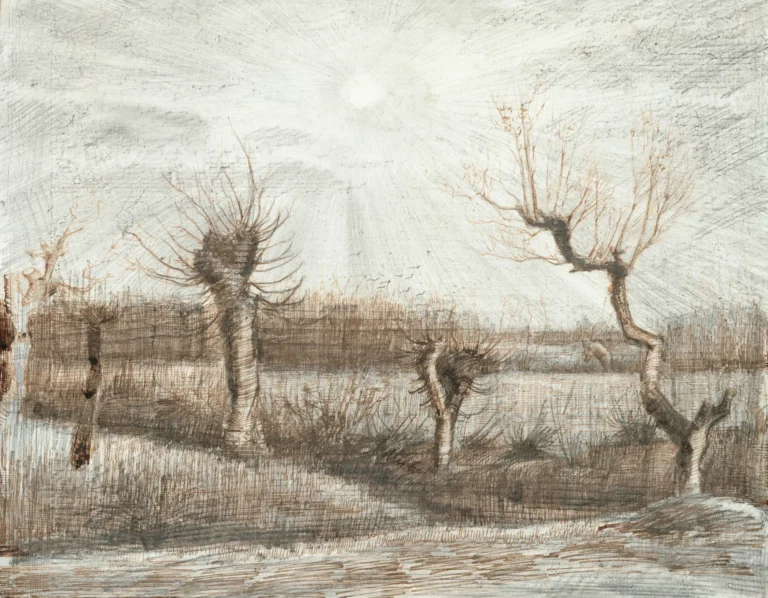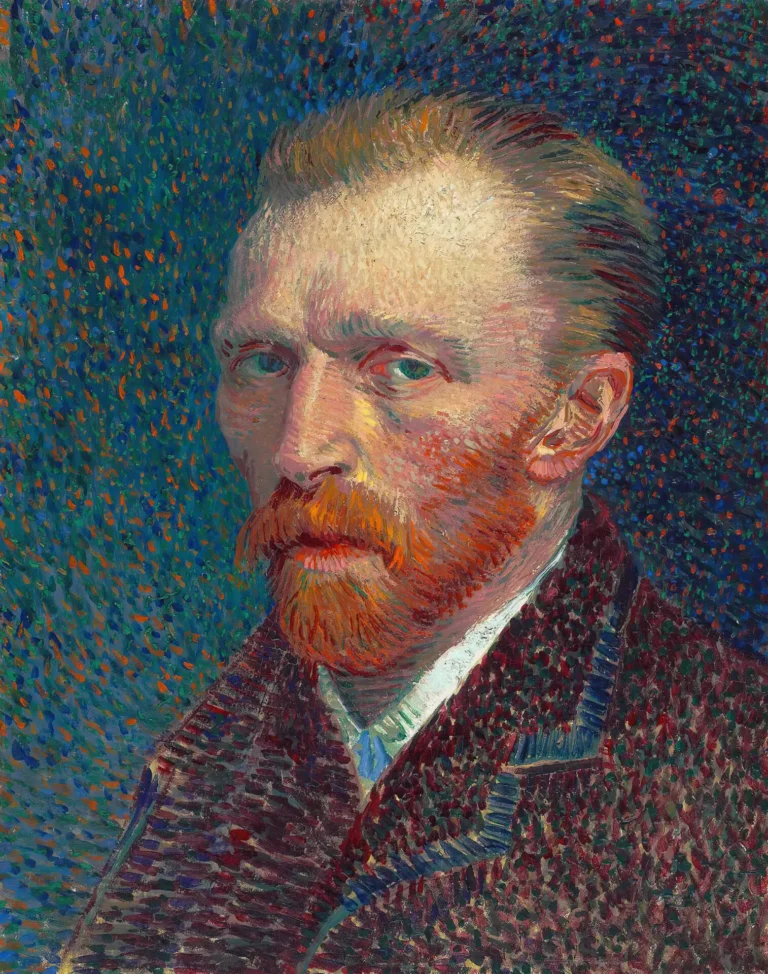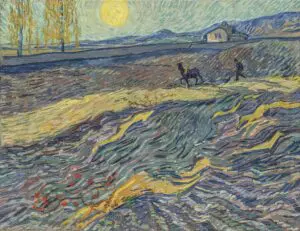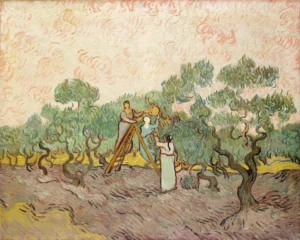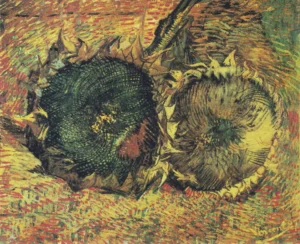Tetards (Pollards) (1884)
Tetards (Pollards) is a captivating drawing that captures Van Gogh's admiration for pollard trees, executed in March 1884. The medium includes pencil, pen and ink, and watercolor, demonstrating his versatile artistic techniques. The work measures 39.5 cm x 54.2 cm, and is part of a series of seven drawings celebrating Brabant landscapes. Van Gogh’s personification of the trees as 'orphan men' reflects his profound connection to nature, making this piece an important representation of his early artistic explorations.
March 1884
About the Artwork
Vincent van Gogh created Tetards (Pollards) while living in Nuenen, a period marked by his deep exploration of the Dutch countryside. The drawing depicts pollard trees—a favorite subject of his. Van Gogh noted in a letter to his brother Theo that these trees reminded him of 'orphan men,' which reveals his belief that nature possesses its own kind of soul and personality. This drawing forms part of a series where he explored the interplay of light, texture, and kinship with the natural world, marking a significant evolution in his artistic style. The artwork has since drawn attention for its emotional depth and technical mastery, emblematic of Van Gogh's burgeoning talents.
Did You Know
Van Gogh often used pollard trees as subjects in his works, likening them to human figures. In a letter to his brother Theo, he described a row of these trees as a ‘procession of orphan men,’ revealing his belief that nature embodies human emotion and soul.
Tetards (Pollards) is one of seven drawings Van Gogh created in 1884 depicting the Brabant landscape. These drawings highlight his developing technique and are a significant representation of his early work in the Netherlands.
After Van Gogh’s death, Tetards (Pollards) was inherited by his brother’s widow and changed hands among collectors before being acquired by the Theo van Gogh Foundation. It is now housed in the Van Gogh Museum, Amsterdam, contributing to the artist’s legacy.




